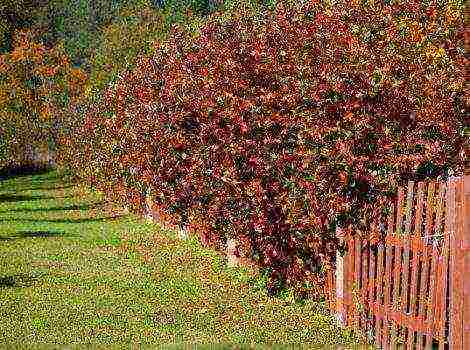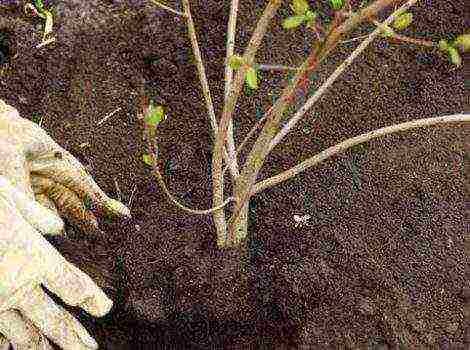Proper home care for Meyer's lemon
Lemons in apartments on windowsills are no longer considered a rarity, but in order to grow this exotic fruit, you need to know all the features of care. Same it is very important to choose the right variety, which will delight not only in appearance, but also with tasty and juicy fruits. In this article, let's take a look at the Meyer lemon.
Characteristics of Meyer's homemade lemon
It's believed that Mayer's lemon or Chinese lemon is a hybrid of orange and lemon, created not in scientific laboratories, but by nature itself. This variety was discovered by the American Frank Mayer, who brought it from China to America in 1908.
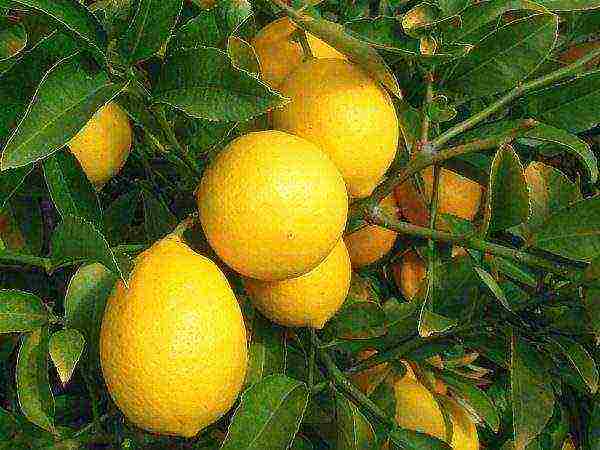
Chinese lemon is the smallest among the representatives of this culture and that is why it is often grown at home. The variety has good frost resistance and yield., tolerates not the most favorable climatic conditions.
The maximum height of the tree reaches1.5 meters, leaves are oval, saturated green color with a characteristic shine. The variety is remontant, that is, it blooms and bears fruit all year round, and in one season you can take several crops with a total weight of 2-3 kilograms. The first fruits can be removed only on 2-3 years tree life... The highest peak of flowering is observed in the spring, with the formation of white flowers, collected in bunches of 6-8 pieces.
From the moment the ovary is formed until the fruit is fully ripe, it takes 8-9 months.Well-rounded lemons can weigh from 70 before 150 gram, the skin is thin, bright yellow. The pulp is orange, sour with a slight bitterness; many tasters evaluate this taste as noble.
Advantages and disadvantages
- Mayer's lemon not afraid of cold temperatures and can grow in almost any climatic conditions;
- The tree itself has an excellent decorative appearance and can become a decoration in any room;
- The fruits are very beautiful and at the same time delicious, which cannot but please flower growers;
- Flowering and fruiting lasts constantlytherefore, with proper care, several crops can be harvested per season.
- Besides all the pluses, Chinese lemon has minuses such as the need for constant and high-quality care, in the absence of which the tree can quickly get sick and die;
- There is also a high risk the appearance of various insect pests;
- Fruit not suitable for long-term storage and long distance transportation.
Features of feeding
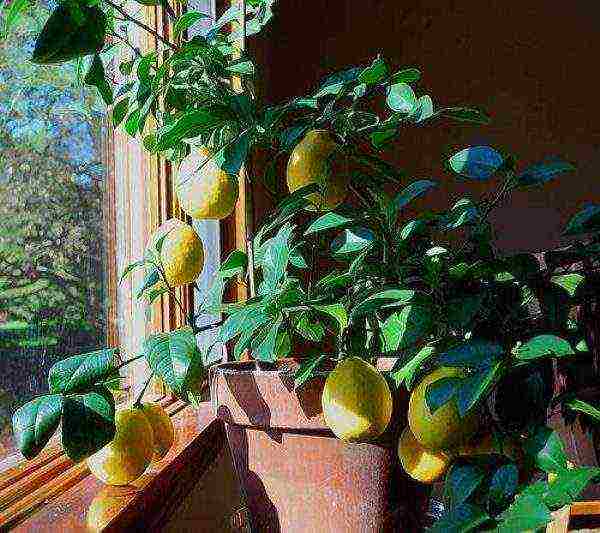
The plant especially needs feeding during the growing season. For this, experienced florists recommend once in 2 weeks from the beginning of spring to the end of autumn (while the lemon is actively blooming and bearing fruit) apply complex mineral fertilizerscontaining nitrogen, potassium or phosphorus.
For the winter period, feeding must be stopped.
Landing rules
Usually, ornamental plants are already sold in pots, but in order to create more comfortable conditions for him, it is necessary to transplant a lemon, while adhering to some rules.
The following potting mix works well for young plants:
- one piece of leafy land;
- one piece of sand;
- one part of humus;
- two parts of turf land.
For older lemons, the composition of the soil changes slightly:
- one piece of leafy land;
- one piece of sand;
- one part of humus;
- one piece of clay;
- three parts of turf land.
A neutral acidity level is preferred. When planting, you need to monitor the position of the root collar, it should be flush with the ground.

Until the lemon tree grew to 5 years old, it must be transplanted annually, while renewing the soil and increasing the size of the previous pot by 4-5 centimeters. As soon as the plant becomes more mature, transplants are carried out once every three years, completely changing the soil mixture and replacing the pot if necessary.
Lemon tree care
So that the tree grows strong and healthy you need to take care of him properly, while creating as comfortable living conditions as possible, close to the region of natural growth of such a plant. There are several aspects to quality care.
Lighting
In order for the plant to be able to fully bear fruit, it must be provided with intense sunlight throughout the year. The best option would be to create 12 hour day, in such conditions, the tree is actively growing foliage, but if the number of light hours decreases, then there is a risk that the lemon will lose all the green mass and simply die.
Florists recommend placing a pot with a plant on a western or eastern window sill, while artificial lighting is required in winter.
Temperature regime
Mayer's lemon does not tolerate drafts and sudden changes in temperature very well, therefore it is not recommended to take the plant out to an unglazed and unheated balcony or on the street.
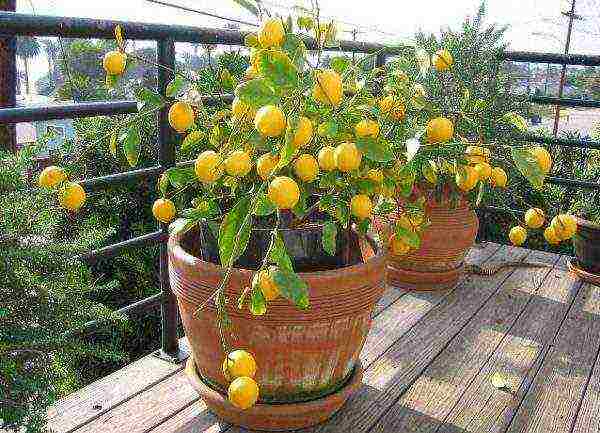
In the summer, it is important to avoid overheating, so in intense sunlight and a lot of heat, it is best to slightly shade the tree so that it receives the right amount of light, but does not burn from high temperatures. The ideal indicator is considered 20 degrees centigrade.
In winter, it is necessary to maintain the state of rest of the lemon tree; for this, the pot is transferred as far as possible from the batteries, trying to provide the plant with a comfortable temperature of no higher than 12 degrees.
Watering
For a comfortable existence plants are recommended to maintain the humidity in the room at a level 70 percent.
Water the lemon tree with both root and foliar method. Simultaneously moisturizing the soil and spraying foliage from a spray bottle. In the spring and summer, the procedure is repeated in the morning and in the evening every day; in the autumn and winter, the frequency of watering is reduced to 2 times a week.
Pruning
To form a beautiful crown of a tree, you need to take care of its pruning in advance, for this you need:
- Grown up the stem of the seedling is shortened to a length of 20 centimeters, while leaving several developed buds in the upper part;
- Grown from the remaining kidneys shoots will become skeletal branches, 3-4 of them are chosen the healthiest, and the rest are cut off;
- Skeletal branches trimmed to length 25 centimeters;
- Shoots of the second order should be no more than 10 centimeters;
- Third order - more than 5 centimeters.
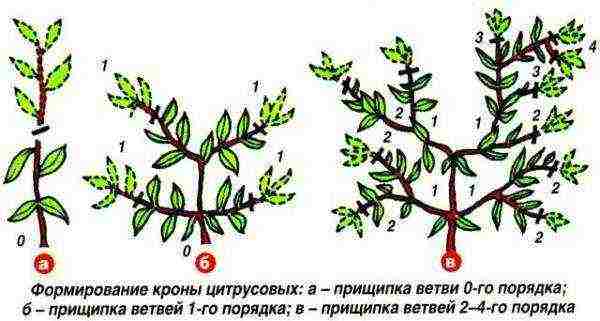
As soon as the shoots of the 4th order appear, the formation of the crown of the tree is considered complete... Now, every year in the spring, they carry out sanitary pruning, removing all diseased, yellowed, dried or damaged leaves.
Reproduction methods
Meyer's lemon can be propagated by seed or cuttings... It is worth noting that with the help of cuttings, you can get a good, varietal tree, and when growing a tree from a seed, there is a high risk of wild life.
Using seeds
- seeds are extracted from the fruit, thoroughly washed and dried on the windowsill;
- then need moisten gauze in water, put seeds on it and remove such a structure in a box, while constantly maintaining the moisture of the fabric;
- as soon as the first shoots appear, seeds are transplanted into the ground, adapted for young plants, while the seeds are deepened by 3-4 centimeters;
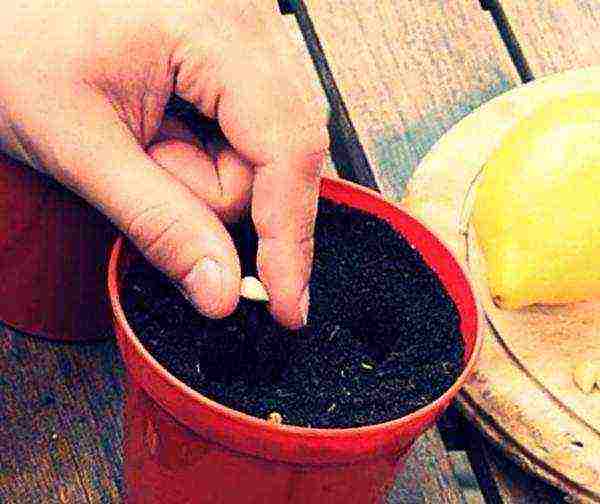
- seedlings are watered once every two days;
- as soon as the height of the tree reaches 15 centimeters, it transplanted into a large container.
By cuttings
- stalk with 4-5 leaves placed in a weak solution of manganese for 20 hours;
- then an oblique cut is processed with a crushed corner, remove all castingsleaving only the top 3;
- to the bottom of the pot lay out drainage, then the soil mixture, on top of the sand, into which the plant is deepened by 2-3 centimeters;
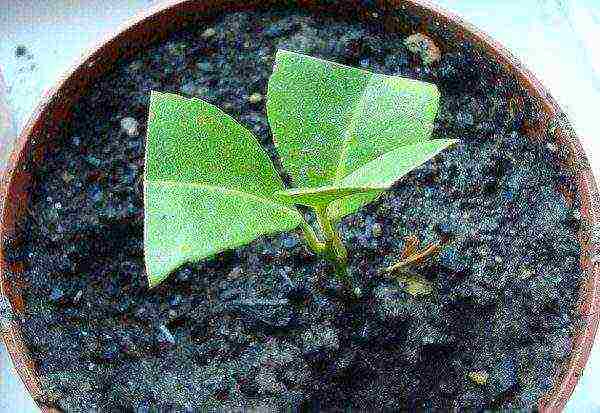
- at the next stage cover the pot with a glass jar or a plastic bag;
- for the best rooting, the structure is placed in a place with diffused light and regularly moisten the soil;
- across 2-3 weeks the shelter is slowly being removed, first for 2 hours, then this time is increased. Carrying out such a manipulation is necessary so that the lemon can adapt to environmental conditions.
Diseases and pests
Improper care can cause some diseases that can be identified by the following signs:
- If the leaves brighten, then this means that the tree lacks nutrients or light;
- If leaves begin to wither and fall, then there is a lack of moisture and you need to immediately start watering and spraying the plant.
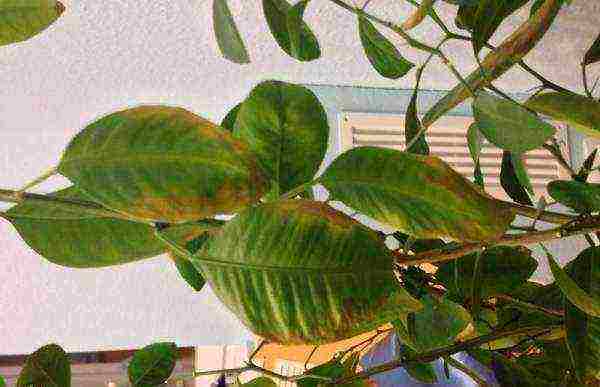
Also, lemon is often attacked by various pests..
- When a spider mite settles on a plant, he begins to build cobwebs and at the first detection of such a sign, the tree is washed under running water from the shower;
- If black dots appear on the leaves-turtles are scale insects, which will help get rid of a mixture of 50 milliliters of kerosene and 100 milliliters of liquid soap.
- Meyer's lemon damaged by spider mites
- Meyer's lemon damaged by a scabbard
Mayer's lemon is great for growing in an apartment as an ornamental variety, which also produce excellent-tasting fruits. Initially, it may seem that caring for such a plant is very difficult, but if you follow all the instructions correctly, you can get a good harvest and no diseases and pests will be scary.

